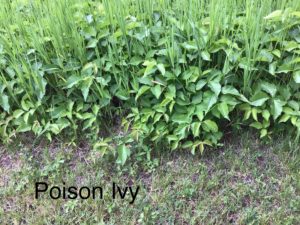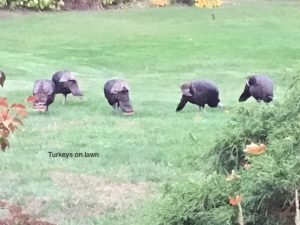What an outrageous thing to ask homeowners everywhere to tear up their lawns and plant pollinator friendly native plants. Lawns do serve an important function. They help clean the air, trap carbon dioxide, reduce erosion from stormwater runoff, improve soil, decreace noise, and reduce temperatures.
Lawns have been a popular feature for years; old European castles and North American homesteads all had an area of short grass surrounding the house.
Lawns keep bugs and noxious plants at bay. Without an area of cut grass my country home would be inundated with poison ivy, dog strangling vine, and deer ticks.
Short grass areas provide a space for children and pets to play, a place for adults to walk or sit and it sets off any ornamental plantings.
Following WW2 the increase of suburban homes, readily available, overly promoted chemicals, and municipal water gave rise to perfectly green carpet like lawns. This type of lawn typically has a very shallow root sysem because it receives most of its water aand nutrients from above. A natural lawn recieves its nutrients from the soil it is growing in, so the quality of your soil detemines the quality of your lawn. It is better to fertilize your lawn with compost or well composted manure than rely on chemical fertilizers.
My cut grass area is a mixture of grass, clover, thyme, violets, dandelions and a few other “weeds”. It receives no fertilizer, pesticides or additional water and is cut by an electric lawnmower. My lawn is frequented by birds, lots of robins, bees and wild turkeys. The skunks and moles visit frequently.
While I am certainly in favour of seeing more grassy areas replaced with pollinator friendly native plants, it is possible to have a lawn that is environmentally friendly and attractive.
authored by Joy Cullen


